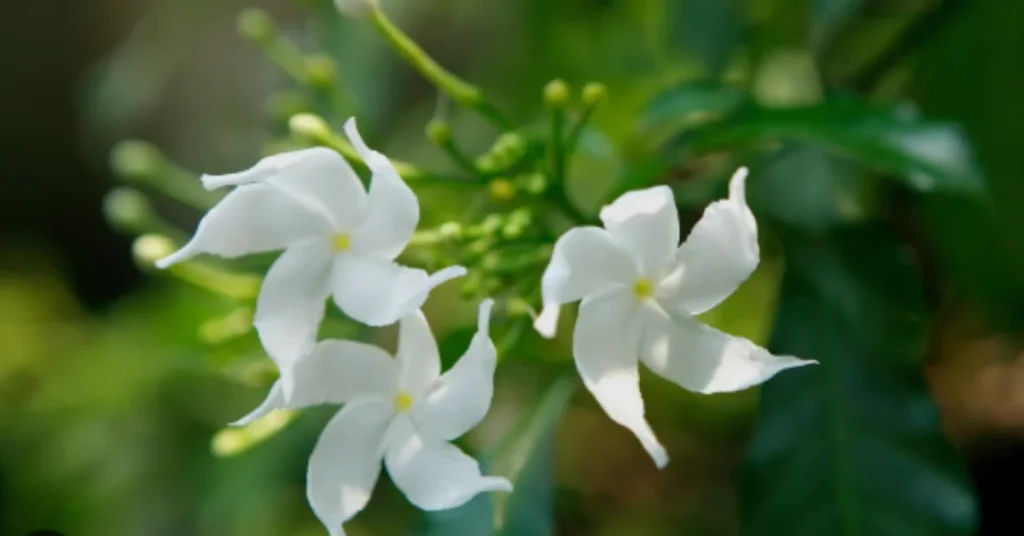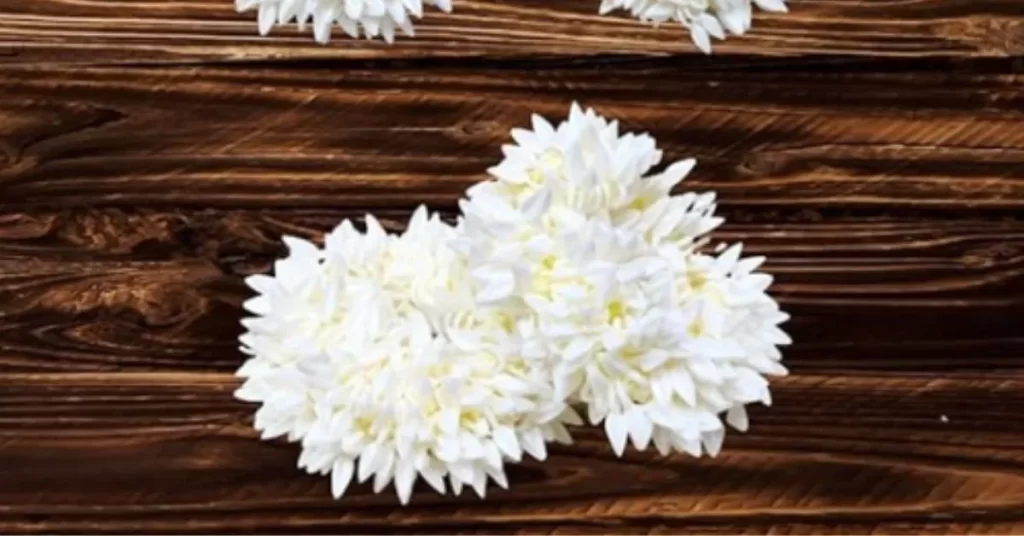Jasmine Plant Dying Main Reasons and Treatment

If you love the floral, sweet smell, then you must know the jasmine flower. A small, star-shaped plant that makes your home or garden look beautiful. Jasmine plants can add a natural beauty touch to any place. This plant has white or sometimes yellow flowers. But it needs extra care if your plant is dying or turning dull yellow.
There are so many reasons for jasmine plant dying, like less water, excessive water, nutrient deficiencies, bugs, and diseases. I’m going to help you with all the solutions to make your plant fresh and healthy once again. We will discuss the reasons for dying jasmine plants and how to cure them. By following each step, you can have a healthy jasmine plant.
Table of Contents
5 Reasons Why A Jasmine Plant is Dying

Before knowing the solutions, you must know the root cause of jasmine plants dying. I’m going to share five reasons why your plant is dying.
1- Overwatering
Watering is essential for any plant, but overwatering can be dangerous for them. Jasmine plants like moist soil but love to stay dry; if the soil becomes too wet, then the roots can get rotten. Overwatering is also the culprit behind pest growth and fungal infections.
2- Underwatering
Another reason for the jasmine plant dying is underwatering, which can also be harmful to the plant. It is important to give the proper amount of water to your plant so that the soil can stay moist. Dry soil can cause your plant to dry and die. Not giving your jasmine plant sufficient water can directly affect its health.
3- Nutrients Deficiency
A complete nutrient mix is a way to get the perfect bloomy plant. It is also a big reason for the jasmine plant dying. A good and balanced soil includes phosphorus, potassium, nitrogen, and other beneficial micronutrients. Nutrient deficiency can be a sign of stress in your plant.
4- Pests and Insects
Different types of bugs like to eat the flowers, stems, and leaves of jasmine plants. Spider mites, white flies, mealybugs, and scale insects are some common pests of the jasmine plant. They can damage and increase the risk of infections in the jasmine plant.
5- Health Diseases
Any bacterial, viral, or fungal disease can affect the health of a jasmine plant. These diseases can also be life-threatening for your plant. Diseases of roots, powdery fungus, spotty leaves, and bacterial infections are some common diseases of jasmine plants.
Treatment for jasmine Plants Dying
Now you understand the problems and reasons for the jasmine plant dying. There are some treatments to solve these issues:
Trimming: For better growth, trim your jasmine plant regularly. It is the best way to grow new branches and help them send their energy to the healthier branch. Trimming branches requires perfect accuracy, so do it the proper way.
Fresh soil: The jasmine plant’s health depends on the fresh soil. It must not be too wet or too dry. A well-moist soil is necessary to grow a beautiful jasmine plant. A balanced, nutrient-rich soil is really helpful for jasmine plants to bloom.
Healthy Fertilizer: Move your plant with a nutrient-rich mix of fertilizers to give it a new start. Check the PH level of your plant’s soil and change it if needed. Follow the right directions on the fertilizer.
Changing pot: changing the pot every two to three years from small to large. Choose the right material for your pot. Cut off dead roots, stems, and leaves, and apply pesticides.
Get rid of the bugs: Go for natural cures in case of infection. Spray a splash of water to get rid of bugs or pests. Wipe it with a damp cloth or cotton ball dipped in alcohol. Keep infected plants away from other healthy jasmine plants.
Temperature matters: Maintain a stable temperature to keep your jasmine plant healthy. It must not be too cold or too wet.
Types of jasmine Plant
There are two common types of jasmine plants: indoor and outdoor. Both have some reasons for dying, which you can handle without any trouble. Let me give you some tips on how to take care of your indoor and outdoor jasmine plants and prevent them from dying.
Indoor Jasmine Plants
Indoor jasmine plants are not fond of excessive water. They like soil that stays moist, but they don’t like too wet roots. If your plant’s soil is too wet, then you should make sure that it has a better drainage system. An indoor jasmine plant requires good, bright, indirect sunlight, but direct sunlight should be avoided as it can burn the leaves.
Indoor Jasmine enjoys a warm environment, so during the winter, using a humidifier can keep them warm and comfortable. Balanced fertilizers are key to blooming flowers. During summer and spring, a strong fertilizer should be used to avoid spider mites and mealybugs. If you want to keep your jasmine plant free from infections, you can use neem oil.
Outdoor Jasmine Plants
Outdoor jasmine plants can’t survive in cold weather. If you live in a cold area, then you must wrap your plant at night. They love the full sun, so make sure they get sunlight easily. Pay keen attention to the plant’s growth and place it accordingly. Try to use a sheltered area because wind can break weak branches. With the right fertilizers, your plant can grow better.
Why Does My jasmine Plant Die in The Winter?
Winter can be harsh on your jasmine plant for various reasons. Taking extra care of your plant can be helpful for its growth. Don’t worry if your jasmine plant has fewer flowers in the winter. You will see more leaf loss as well, but excessive loss indicates other reasons, like underwatering and cold weather damage. Yellow leaves are also a sign of winter or nutrient deficiency.
Conclusion
Jasmine plants are wonderful creatures; their pleasant smell can make you feel better. They suffer from different problems, which can be a reason for their deaths. If you see that your plant is suffering from dying, follow the tips mentioned above to give it a new life. Every step is important and beneficial to save your jasmine plant. Patience is the key to growing it once again. Follow the right instructions, and you will have a healthy and happy plan.
FAQs
Q: How can I bring my jasmine back to life?
It’s so easy; just give a proper amount of water, nutritional fertilizer, and time-to-time trimmings, and keep away from cold weather.
Q: Why is my jasmine turning brown?
It can be a sign of a fungal infection, excessive water, too wet soil, or a severe cold.
Q: What is killing my jasmine plant?
There are so many factors that cause dying jasmine plants, like pests, rotten roots, and extreme dry or cold weather.
Q: Will my jasmine grow back?
Yes, you can grow it back by knowing the actual reason or root cause of your plant dying. Follow the above steps to help it regrow healthily.

I am Yasir Riaz, an Agronomist for more than a decade. Helping local farmers and Gardeners to improve their crops and Gardens and overall productivity. In addition to my work in agriculture, I have also delved into the digital world as an SEO writer and blogger. Through my blog, I aim to educate and inspire others about the Chameli Flower (Jasmine).






